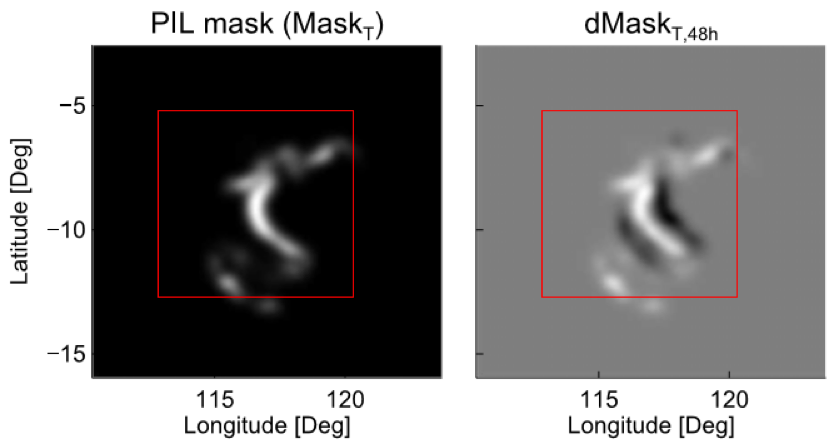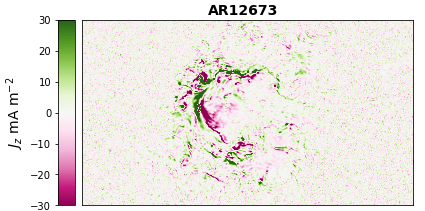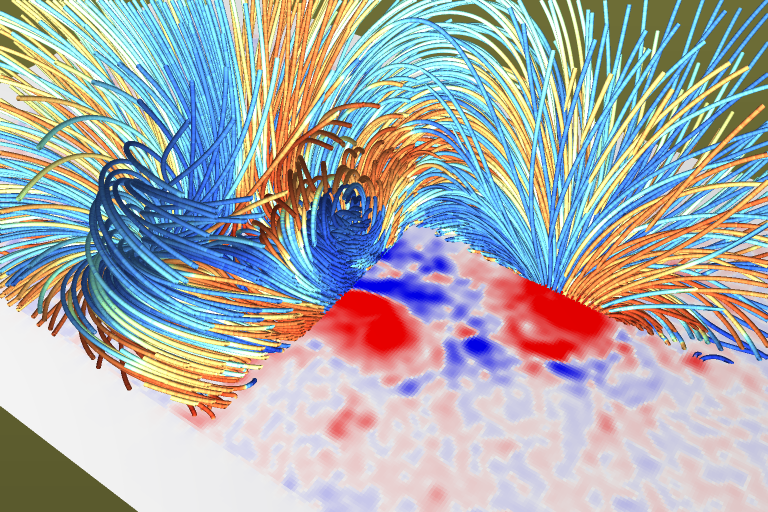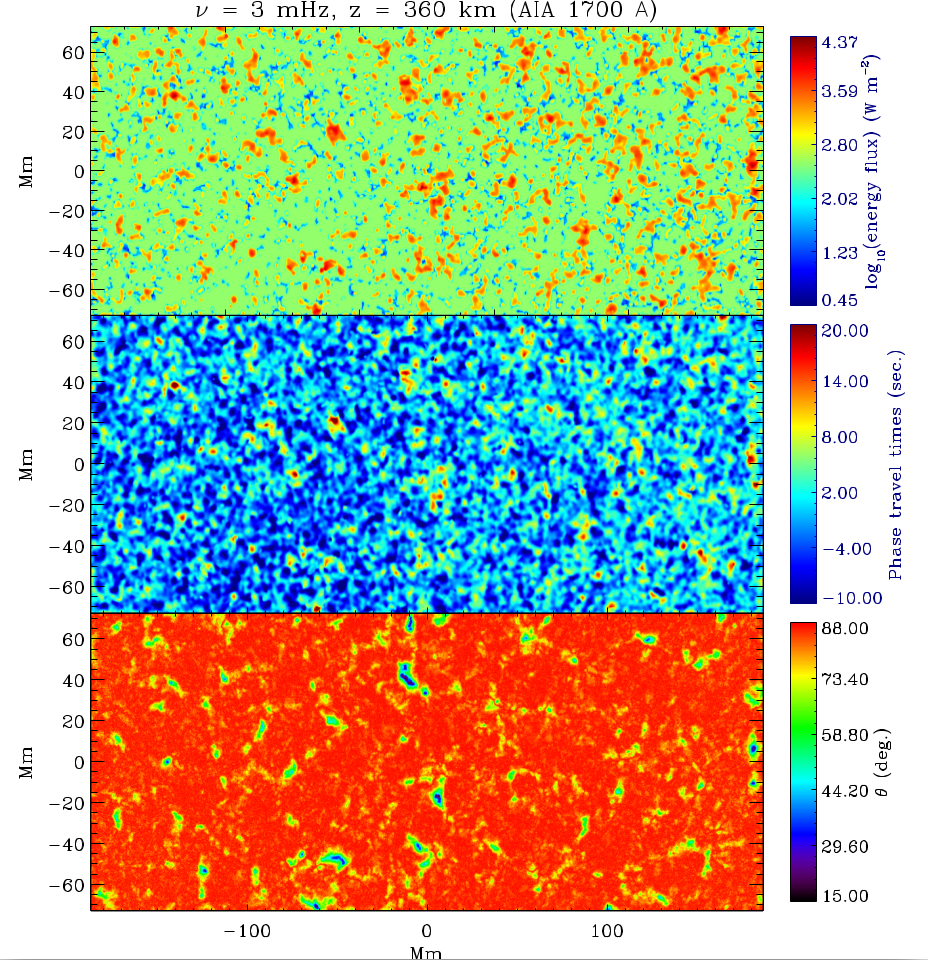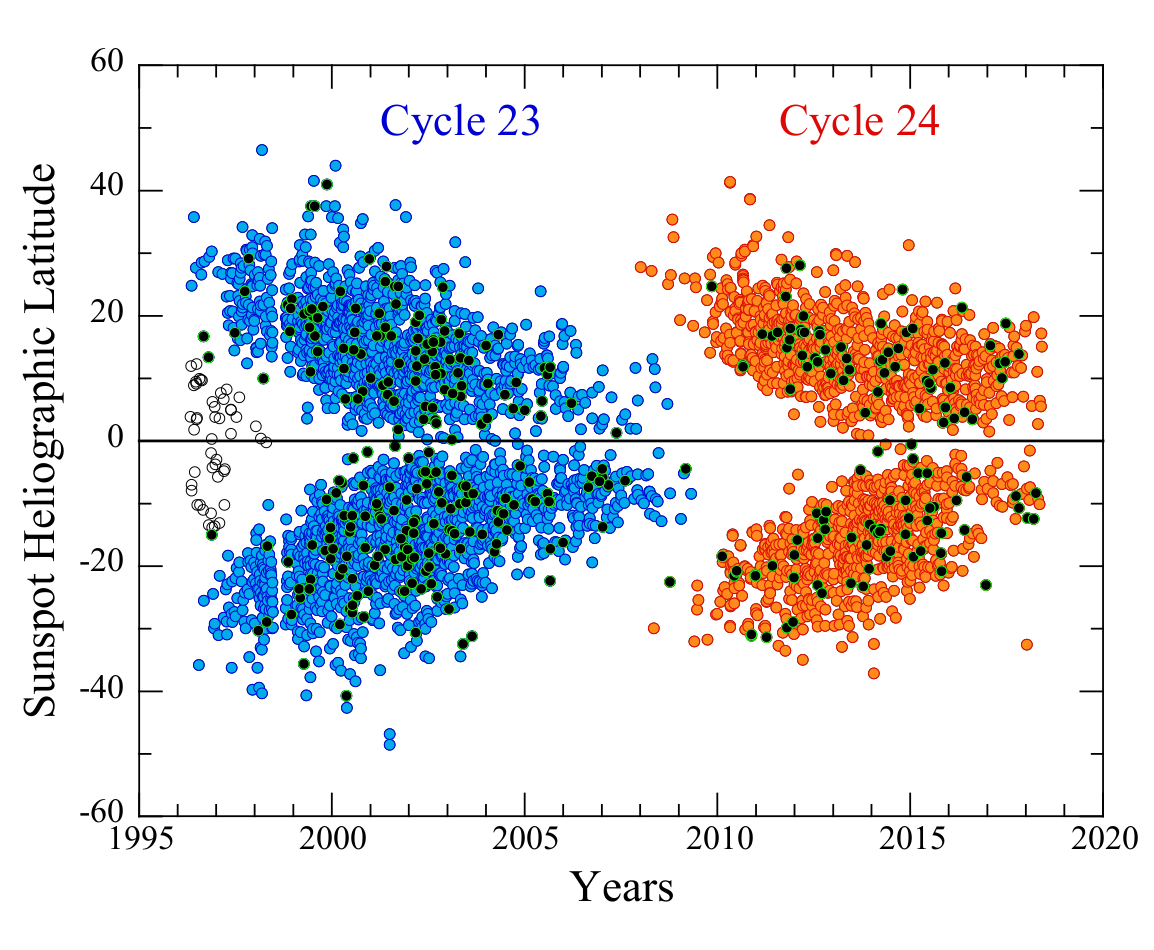Tag Archives: active regions
140. Solar Flare Predictive Features Derived from Polarity Inversion Line Masks in Active Regions Using an Unsupervised Machine Learning Algorithm
138. Electric Current Neutralization in Solar Active Regions and Its Relation to Eruptive Activity
137. Imaging the Sunʼs Far-side Active Regions by Applying Multiple Measurement Schemes on Multiskip Acoustic Waves
124. On Solar surface Electric field Estimation with 3 Poisson solvers (SEE3Po) for driving time-dependent MHD simulations of solar active regions
123. Very Fast Helicity Injection Leading to Critically Stable State and Large Eruptive Activity of AR 12673
121. The Origin of Major Solar Activity: Collisional Shearing between Nonconjugated Polarities of Multiple Bipoles Emerging within Active Regions
Magnetic flux of opposite polarities belonging to two different emerging/emerged bipoles inside multipolar magnetic regions, can experience “collisional shearing”, a process resulting in strong shearing and fast cancellation of magnetic flux near the polarity inversion line. This type of flux cancellation is found to be the cause of a succession of major flares and CMEs in complex active regions.
120. Magnetic Fields and the Supply of Low-Frequency Acoustic Waves to the Solar Chromosphere
Through analyzing simultaneous HMI’s visible-light observations and AIA’s ultraviolet observations, the authors show that a significant amount of acoustic waves with frequencies lower than the theoretical cutoff frequency can channel up along less inclined magnetic field from the photosphere to the chromosphere.


